TEAM BUILDING IN HO CHI MINH

Location: 1,760km south of Ha Noi (1¾ hours by plane from Ha Noi, Singapore, 1 hour by plane from Bangkok, and 2¾ hours by plane from Hong Kong).
Introduction: Ho Chi Minh City (formerly Saigon) is now Viet Nam’s most populous city and the economic powerhouse in Viet Nam. Saigon is the name of a fantastic river flowing through the city. This river gave birth to the Saigon – Cho Lon Port and the most buoyant riverside city in South East Asia as early as the 18th century.
Today Ho Chi Minh City, with a population of over 10 million, is the largest city in Viet Nam and one of the three biggest municipalities in the country (the others being Ha Noi and Hai Phong). The huge numbers of people and their obvious industriousness, street stalls and modern high-rise buildings create a dynamic urban area full of color and atmosphere.
Ho Chi Minh City is a focus of several unique and convenient travel lines with high class facilities and diverse tourist products, worthy of its reputation as a leading tourist center of the region and the whole country.
Highlights: landmark buildings (Notre Dame Cathedral, the City Hall, the Municipal Theatre, Reunification Palace), old pagodas (Thien Hau, Giac Lam), traditional markets (Binh Tay, Ben Thanh), shopping centres, museums (History Museum, War Ramnants Museum, Fito Museum of Traditional Medicine), Cu Chi Tunnels, Skydeck’s Bitexco Tower, Can Gio Biosphere Reserve.
Facilities & services: an international and domestic airport, international standard hotels, exhibition halls, art galleries, conference centers, international banks, shopping areas, hopon-hopoff city-tour bus, stylish restaurants, theatres, nightclubs, bars, and cafes.
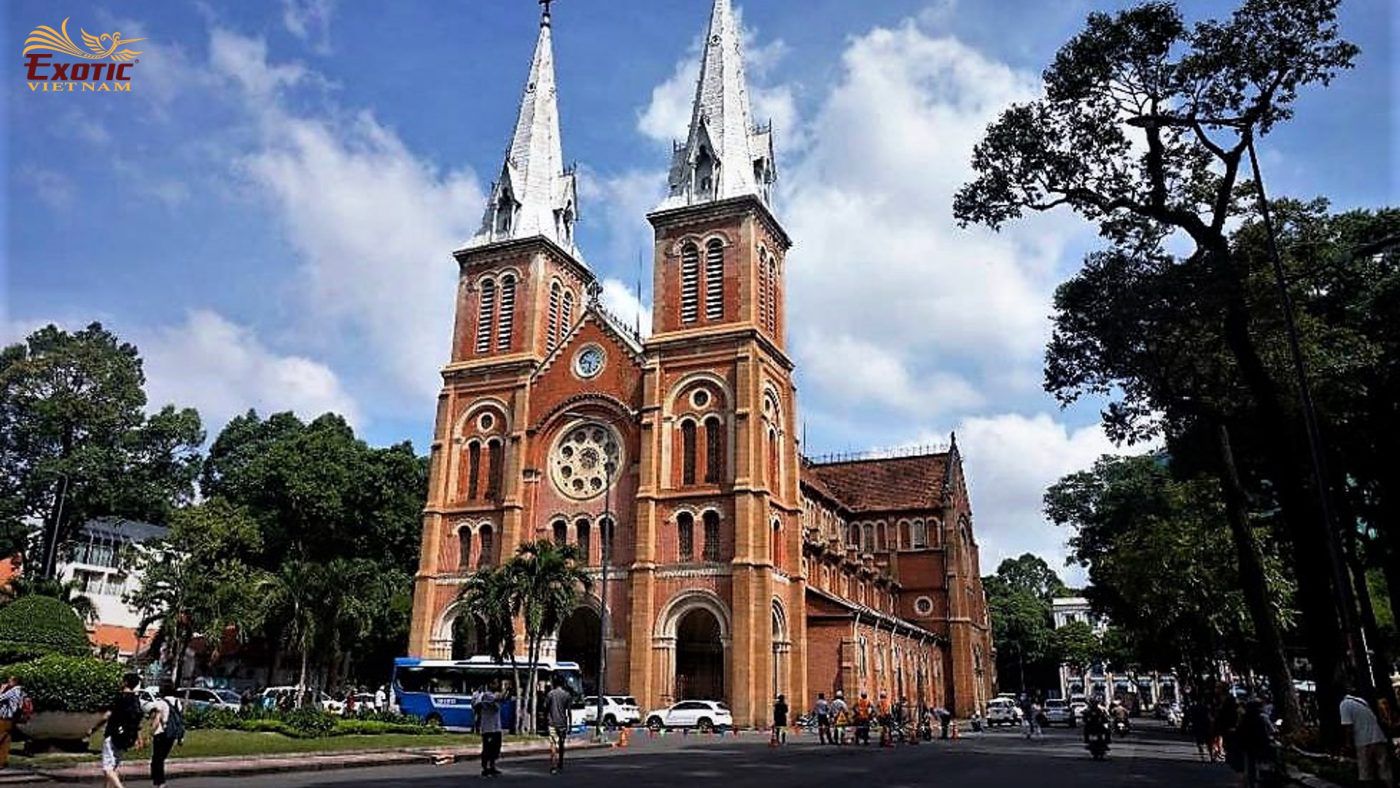
Notre Dame Cathedral
Built between 1877 and 1880 with all materials for its construction were shipped from France, Notre Dame Cathedral is located right in the heart of the city. Its neo-Romanesque style and two 36.6-metre-high square steeples made it a central landmark. In 1895, the cathedral built two more rooftops to cover the 21-meter-high bell tower, designed by architect P.Gardes. The amazing architecture with the two bell towers, each with the height of 58m, was the most beautiful sacral building in the French colonies. Outside the main building lies a small garden that has the statue of Mary – Queen of Peace. This statue, which is made from marble, was completed by the Italian Sculptor G. Ciocchetti in 1959. The church had a huge renovation from 2017 – 2021.
The church’s capacity can reach up to 1,200 people. Visitors can attend mass held three times on weekdays and Saturdays and six times on Sundays, especially a mass at 9:30 am on every Sunday in both Vietnamese and English. HCMC’s post office overlooks the square in front of the church.
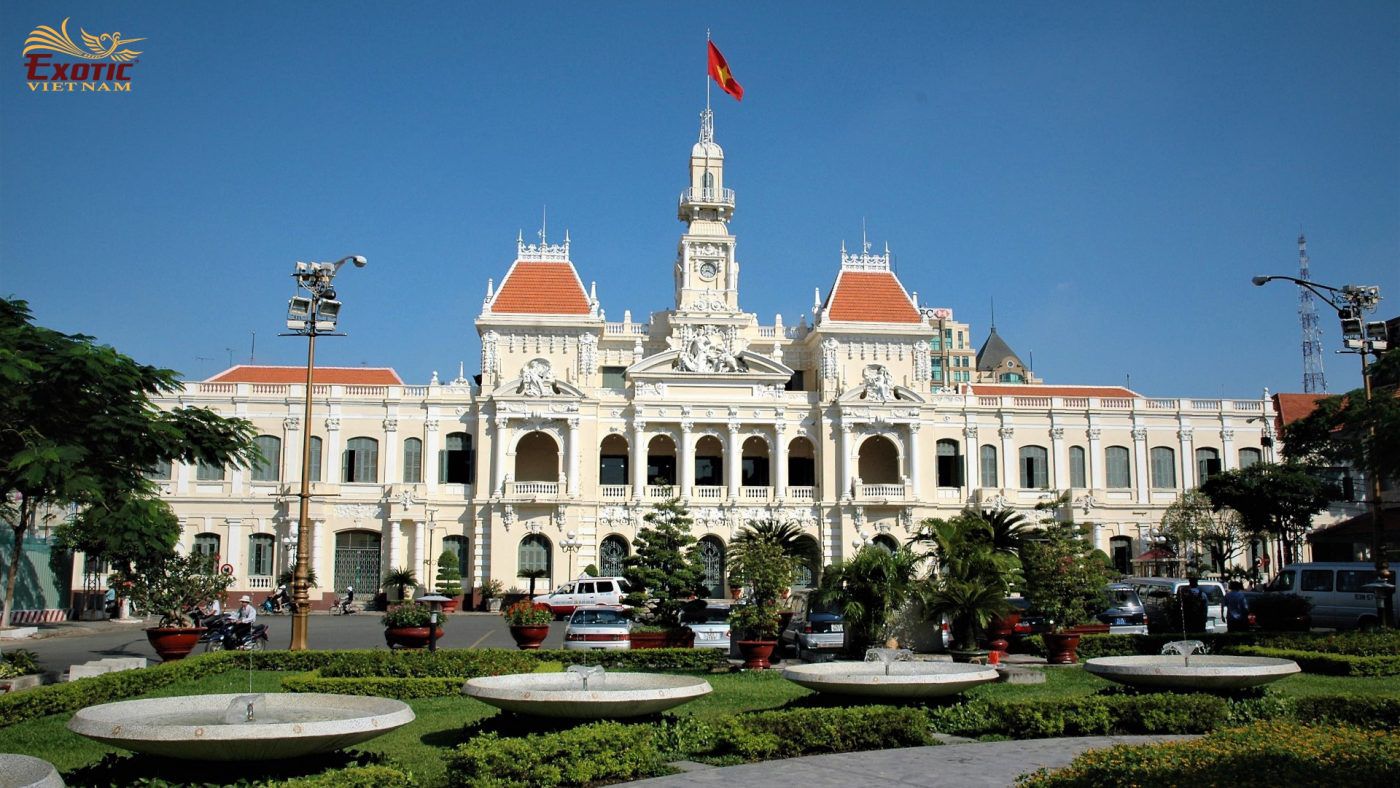
City Hall
Standing at the end of Nguyen Hue Boulevard, the People’s Committee building is the city hall of Ho Chi Minh City, formerly called the Hotel de Ville. In French style, the building is modeled on Paris’ own Hotel de Ville and was completed in 1908. Facing toward Saigon River, the building is notable for its ornate facade and elegant interior lit with crystal chandeliers. The small park in front has a memorial statue of Ho Chi Minh. Nowadays the building is used for the city administration in daily working and meeting occasions
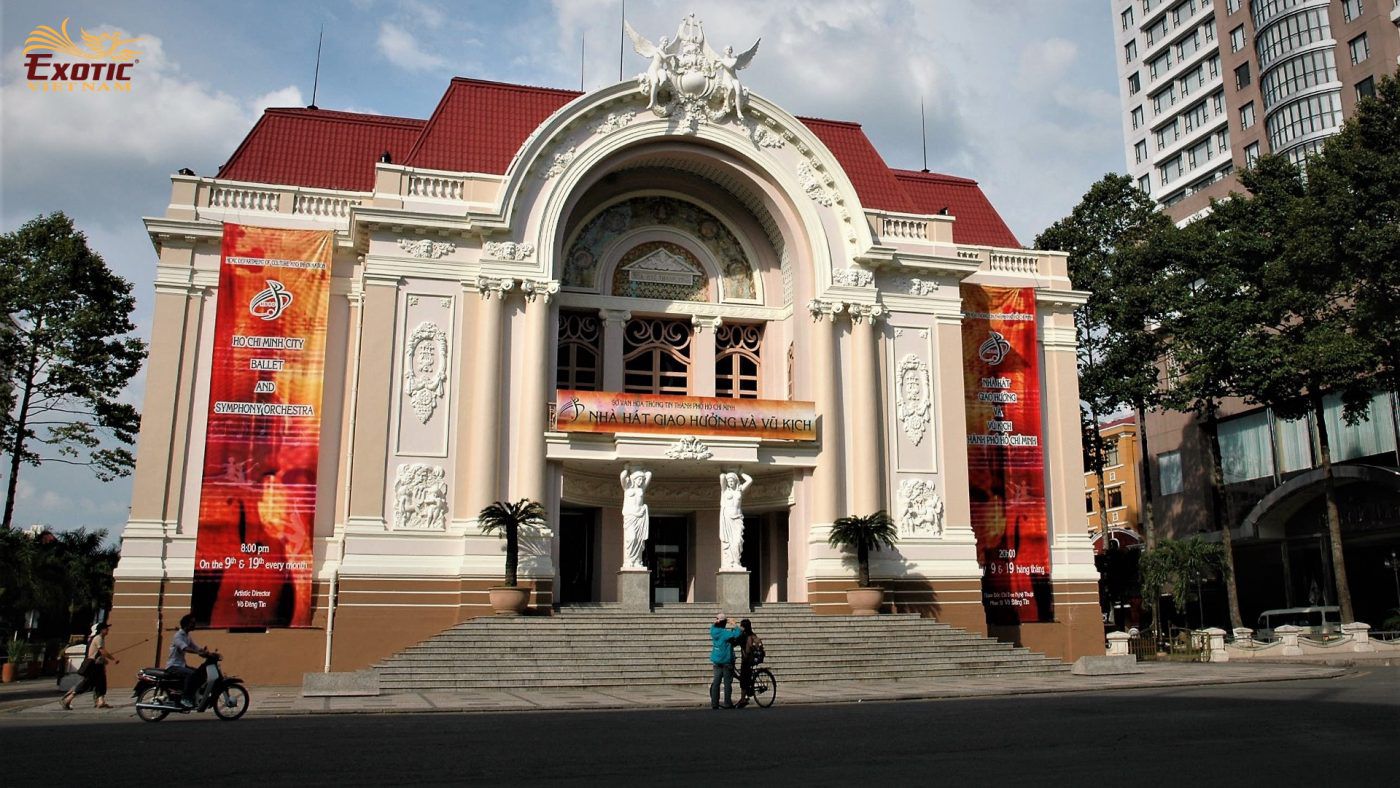
Municipal theatre
Municipal theatre is in Dong Khoi Street just opposite Caravelle Hotel. It was built at the turn of the century and later renovated in the 1940s. The 3-story building has a seating capacity of 1800. It was built in French architectural style of which the materials were mainly transported from France. A group of French artists was in charge of interior decoration with patterns similar to those in France’s late 19th century opera houses. The theatre finished with spacious ventilation and state-of-the-art sound and light systems. In front of the theatre is a park where young people like to sit around. The theatre often offers different programs such as concert, drama, and ballet. The performance is typically at 8pm. It also has rooms for meetings, conferences, ceremonies, workshops, and other gatherings.

Independence Palace
One of the most fascinating sights in HCMC is Independence Palace” (Dinh Doc Lap). Considered as the power symbol of the South Viet Nam government, the building witnessed every historical events happening to the Saigon Government until “the Fall of Saigon” on April 30, 1975. In a short period, it was renamed as “Reunification Palace” to engrave the unforgettable victory of the resistance to unify the country. In addition to historic value, the Reunification Palace is famed for its architecture, which is unique in Viet Nam. Located in the heart of downtown Saigon, the building was built on a area of 12ha, surrounded by immense fences and high trees in its gardens, the palace’s main building is modern architecture of the 1960’s style.
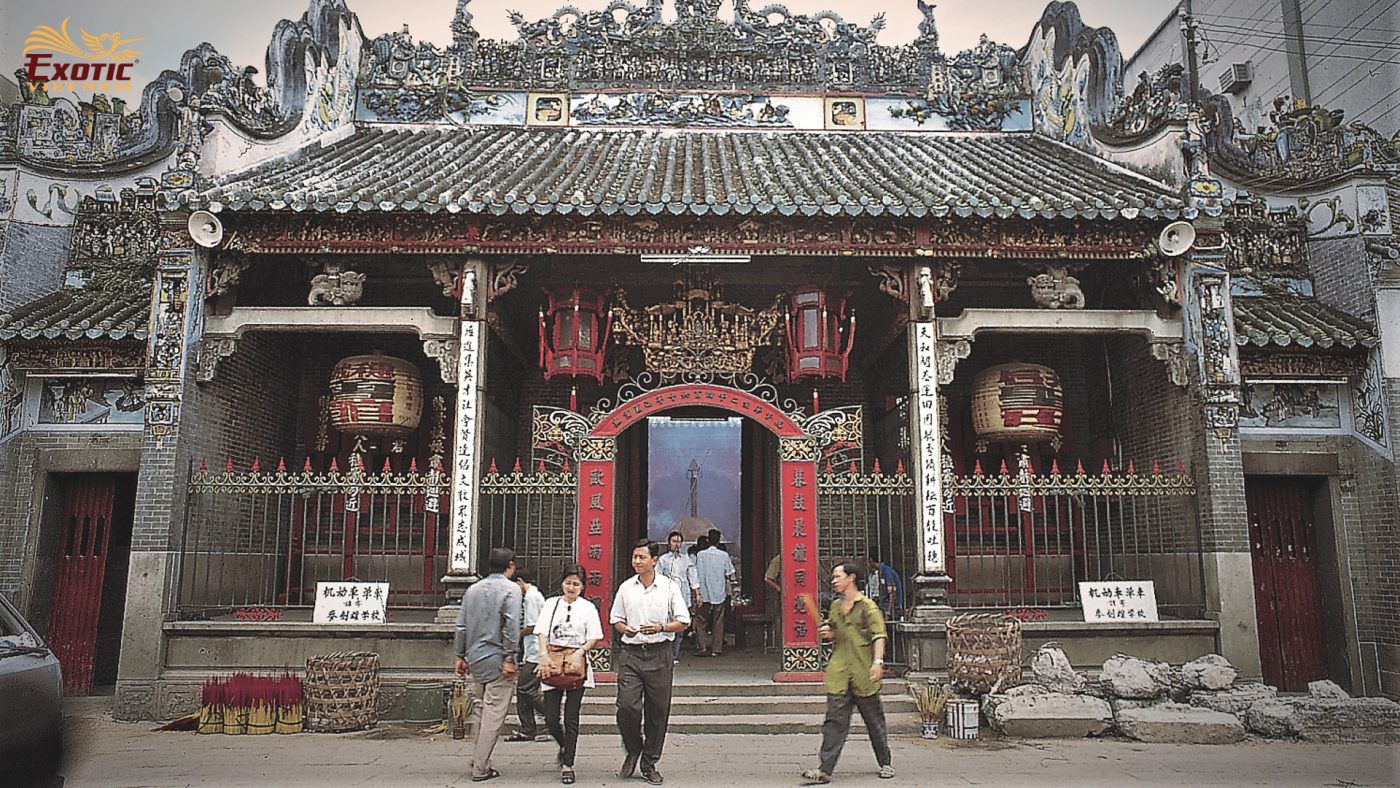
Thien Hau Temple
Dating back to the early 19th century, the temple is dedicated to Thien Hau, the Chinese Goddess of the Sea, who protects fishermen, sailors, merchants and other seafarers. Though there are guardians to either side of the entrance, it is said that the real protectors of the pagoda are the two land turtles living here. The temple’s interior courtyard with intricate ceramic friezes is worth seeing with beautiful ceramic figurines and antiques, commemorating the arrival of the first Chinese immigrants from Canton. On the 23rd day of the 3rd lunar month, the biggest ceremony is held in Thien Hau temple to her honour. People pray to her for happiness, prosperity, and solidarity.
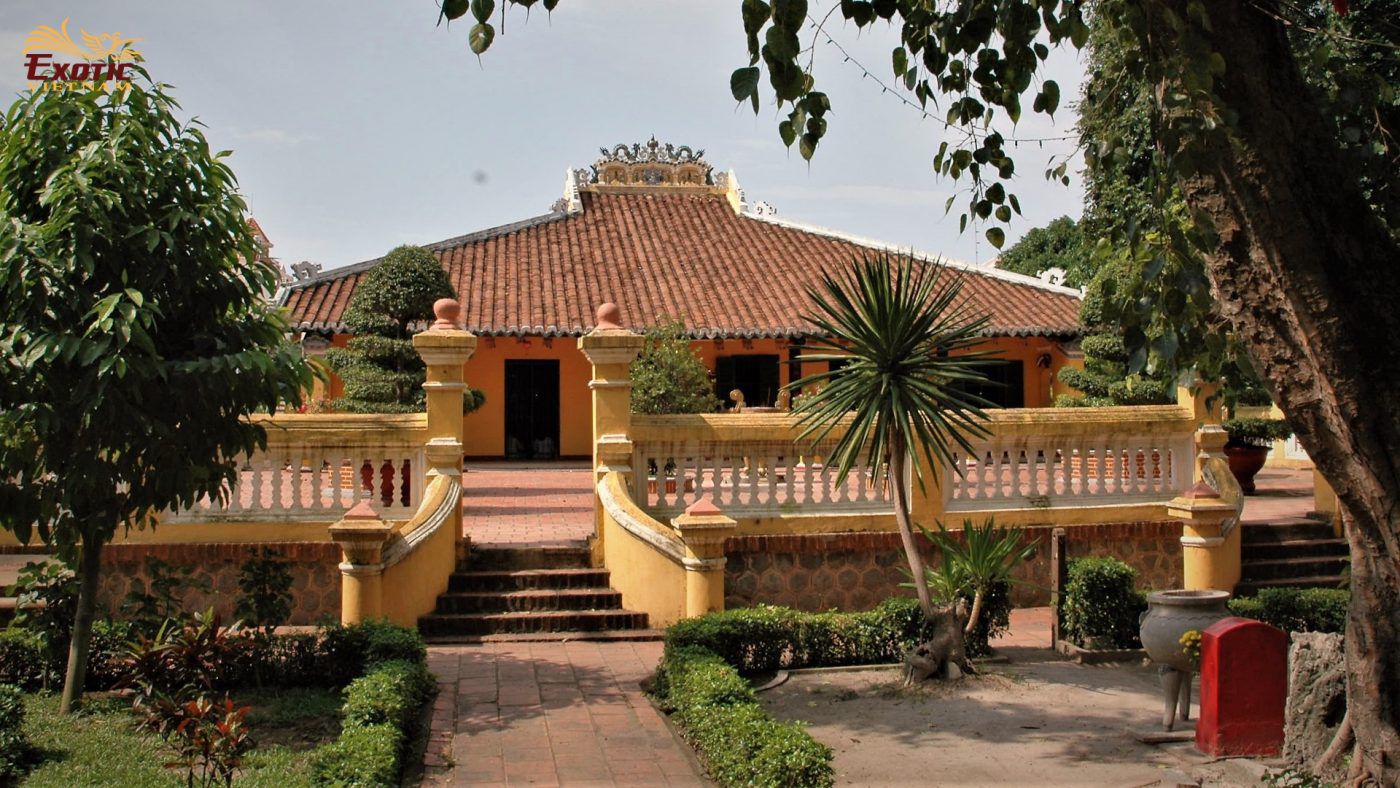
Giac Lam Pagoda
Built in 1744, Giac Lam, the oldest pagoda in HCMC, reflects the architectural style of pagodas in southern Viet Nam. The pagoda impresses visitors with remarkable 98 carved wooden pillars, gilded descriptions in old Vietnamese characters, and 113 Buddha statues made from jackfruit wood. The Buddha statues of Giac Lam pagoda are famous for their fine sculpture. On the left of the pagoda’s main gate is a seven-story tower built in 1994 in which each level is reserved to worship a Buddha and the top level for the sacred relics of the Sakyamuni Buddha. Giac Lam pagoda is acknowledged as Nation Heritage.
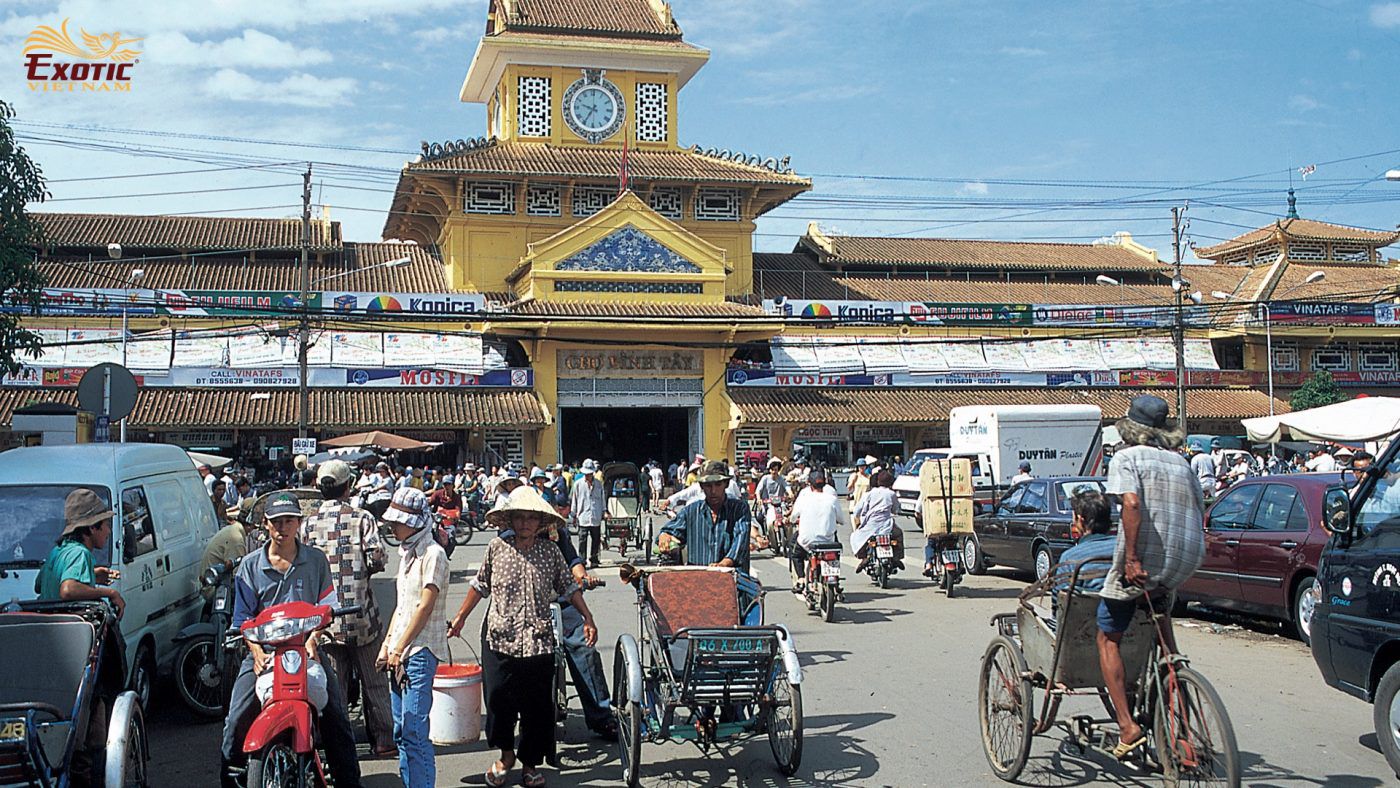
Binh Tay Market
Quach Dam, a Chinese merchant, spent money to buy over 25,000 sq.m of muddy land at Binh Tay village, leveled it, and built a new market to donate to the authorities in 1928. To serve the business, he asked for permission to build a few rows of storeyed shop houses around the market. From 2017 – 2018, the market underwent a comprehensive restoration. The founder’s memorial as a sacred place to pray for good luck in business can be found now at the middle courtyard in the market.
Covering an area of more than 17,000 sq.m, the market with four facades looks like a Chinese citadel, was built with Asian architectural style but applied contemporary Western techniques and was considered the largest market in South Viet Nam. The market was originally called Cho Lon Moi (New Big Market). After 1975, it had the new name – Binh Tay Market and has still kept the biggest wholesale market in Viet Nam dealing in a wide variety of goods made by the Chinese community and products from all over the country.
Today there are 2300 stalls in the market for food and spices, the highest percentage of which is found in household goods, ready-to-wear items, foodstuffs and other commodities. Visitors are encouraged to stroll around the market, to socialize themselves with the locals.

Ben Thanh Market
Built in 1914 and known to the French as the Halles Centrales, the market, last renovated in 1986, is located right in the heart of the city where everything can be found, from vegetables and fish to branded goods and local handicrafts. Here, you also find eating stalls inside the market where you can get a taste of hawker-style Vietnamese cuisine or simply cool off with a cold drink when the bargaining becomes too much.
Ben Thanh Market at night is also an interesting hotspot to experience. From 6pm to 10pm every night, various lines of stalls are lit up with neon lights on both sides of Phan Boi Chau and Phan Chu Trinh streets. They create a vibrant street scene, showing different street foods in an eye-catching way to attract gourmets, filling the air with the scents of wok-fried noodles, barbecued fish and meats. Many locals as well as tourists gather to eat and drink in the noise and cool afternoon river breeze.
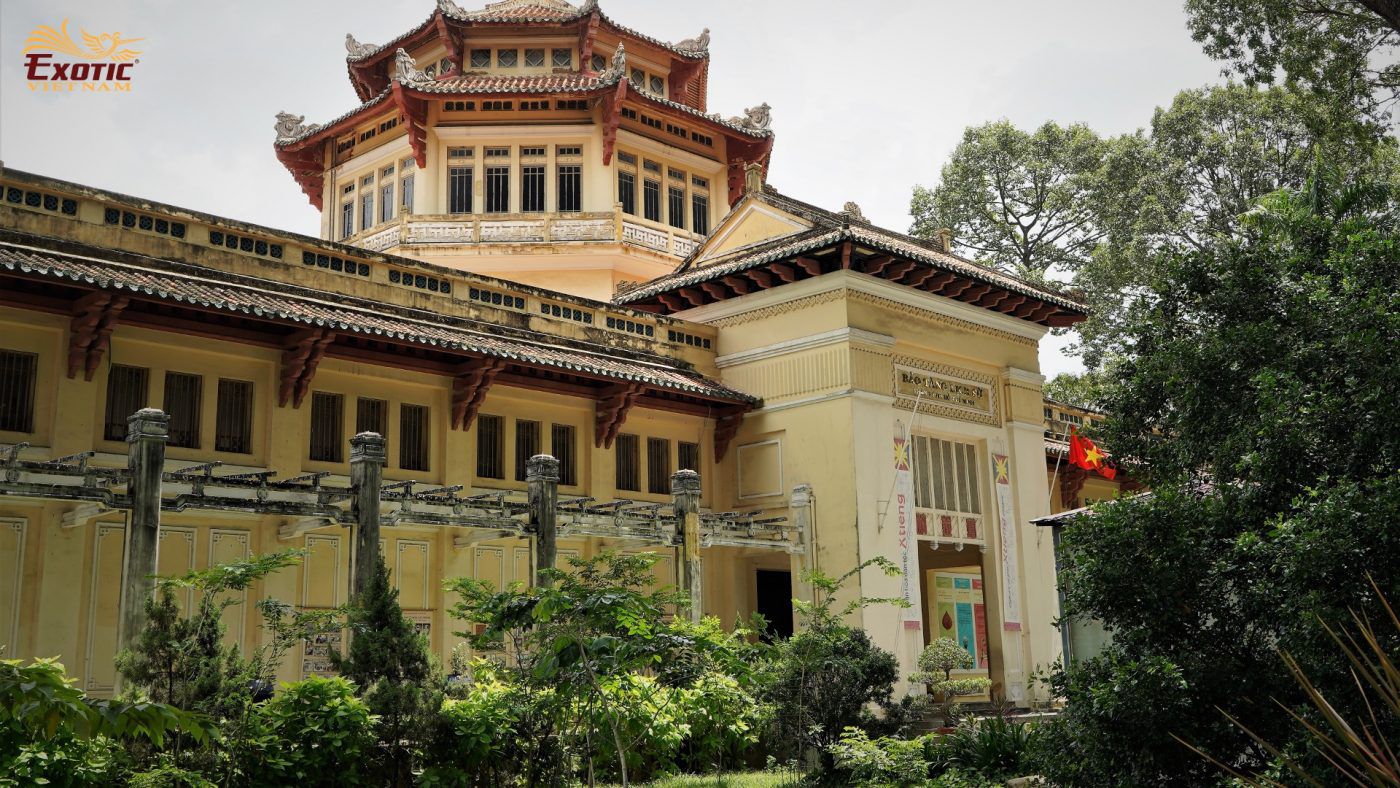
History Museum
In 1929 this museum was built within the boundaries of Zoological and Botanical Garden to serve as “Musee blandchard de la Bross” and later became the “National Museum of Viet Nam” with a collection of ancient art from several Asian countries. In 1975 the Museum was renamed “History Museum in Ho Chi Minh City”. The museum now displays an excellent collection of artifacts representing the evolution of Vietnamese people and featuring the characteristics of its culture. The artifacts are divided into 2 groups: the Viet Nam’s history from the first human vestiges (some 300,000 years ago) until the establishment of Vietnamese Communist Party (in 1930); and the second group is represented the cultures of the southern provinces such as the Oc Eo culture, the Cham art, the culture of Ben Nghe-Saigon area, the ethnic groups in Viet Nam, the collection of Buddha statues in Asia and an ancient ceramics from Asian countries.
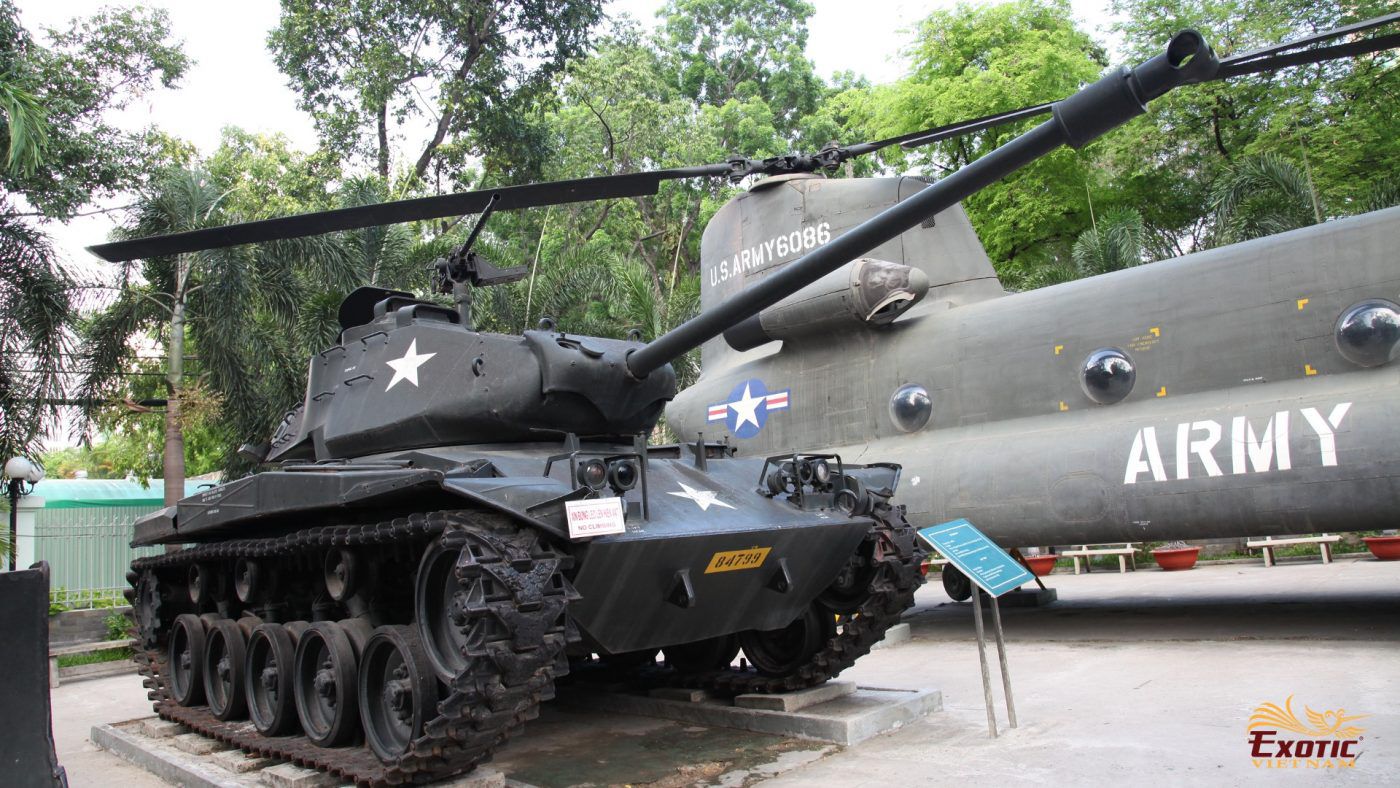
War Remnants Museum
Established in September 1975, the museum was formerly known as the Museum of American War Crimes, then changed as the War Remnants Museum. The museum keeps things remained from the War such as tools of torture, photographs of atrocities committed during the 20th century and, in particular, the Viet Nam War. At the front yard of the museum there is a small collection of military hardware and, most interestingly, the mobile guillotine used by the French colonists to dispense justice throughout the country before World War II.
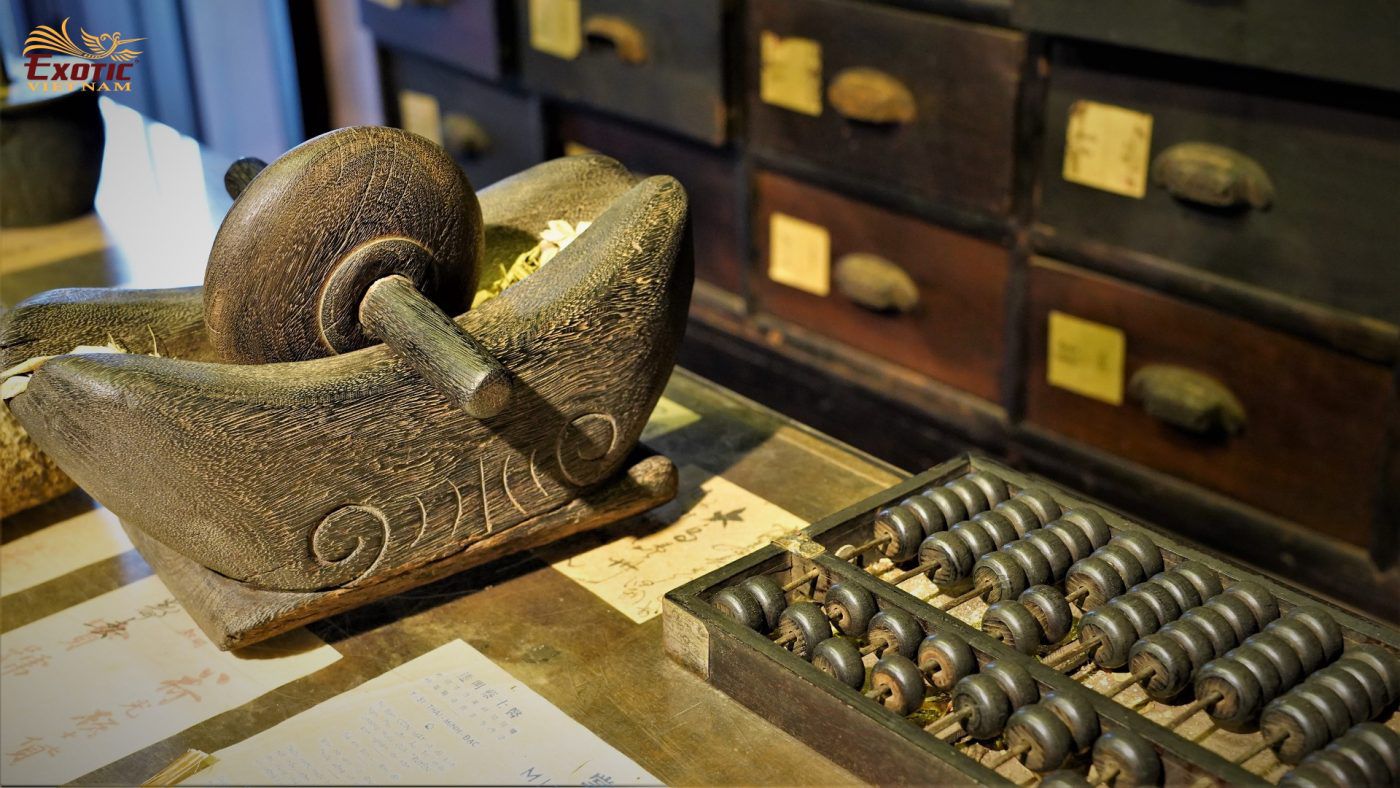
Fito Museum of Traditional Medicine
Opend in 2007, Fito Museum impresses with its striking sculptural interiors made of wood. There are 6 floors with a total of 18 rooms, covering an area of 600 sq.m. Firstly a documentary film introduces the overview of history of medicine in Viet Nam. Then the sightseeing starts from the upper floor, gradually going down to the lower floors. The museum has nearly 3,000 precious items, some of which are artifacts from the Neolithic period to the present day. Exhibits include tools used to prepare medicine, knives, mortars and pestles, documents and objects of a traditional pharmacy. A small shop with a variety of traditional medicines for common ailments is sold on the ground floor. It is truly a worth-visiting place for those who appreciate the uniqueness of Vietnamese traditional medicine.
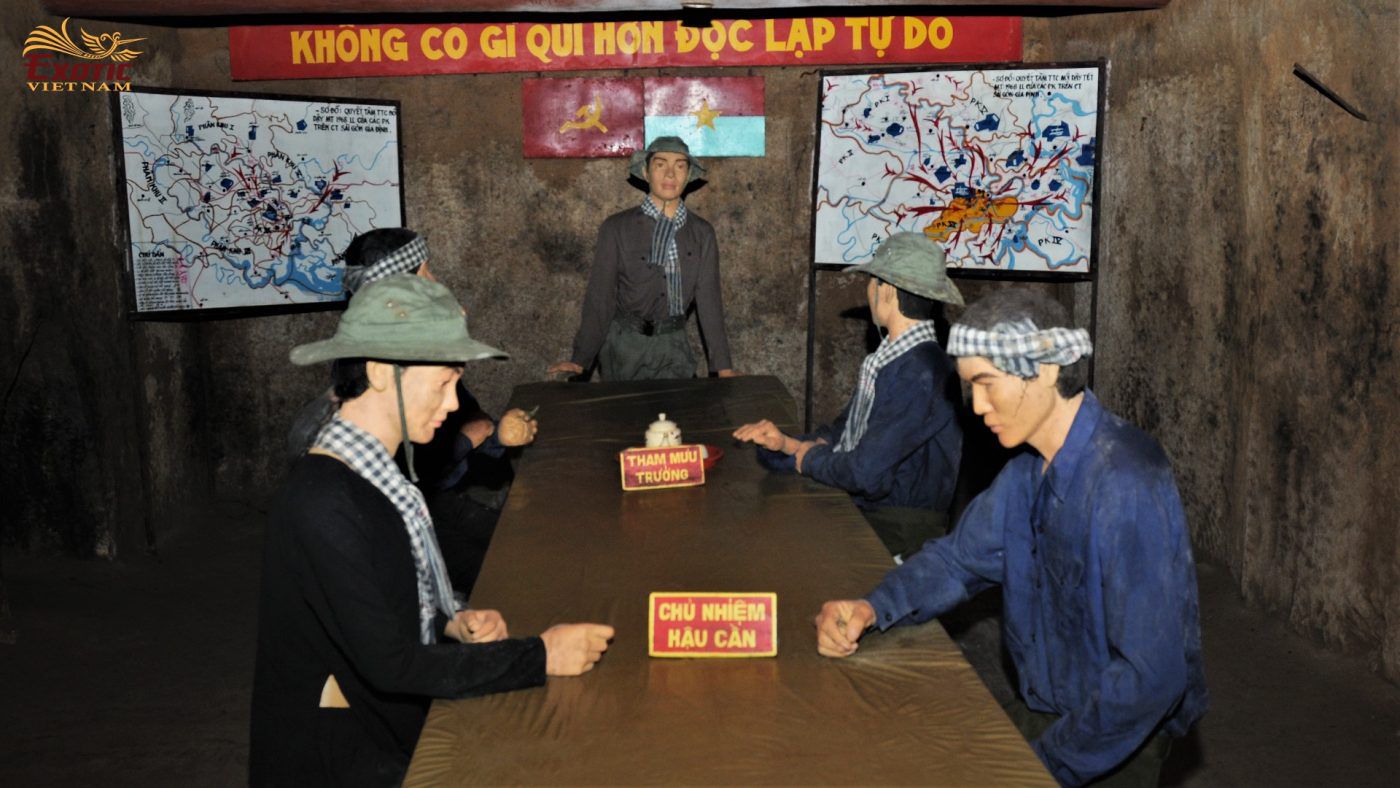
Cu Chi tunnels
About 70km from downtown HCM city, Cu Chi used to be a bitter battle ground for many years during the Viet Nam War. Visitors should not miss this intricate network of over 200km of tunnels at Ben Duoc or Ben Dinh. The digging of the tunnels began in 1946 during the anti-French resistance and continued until 1975.
The underground tunnels and bunkers were used by guerrillas as spots to fight in face-to-face combat with American soldiers, as well as a communication and supply lines, a field hospital, a warehouse for food and weapons, and a hiding place for troops before big campaigns. The tunnel system played an extremely important role for the Liberation Front of South Vietnam in the resistance war against the US to save the country, and made a great contribution to ending the Viet Nam War.
Pleasant eye-catching sights on the way to Cu Chi are green rice paddies, peasants at work and children riding aimlessly on water buffaloes. That’s great to snapshot.
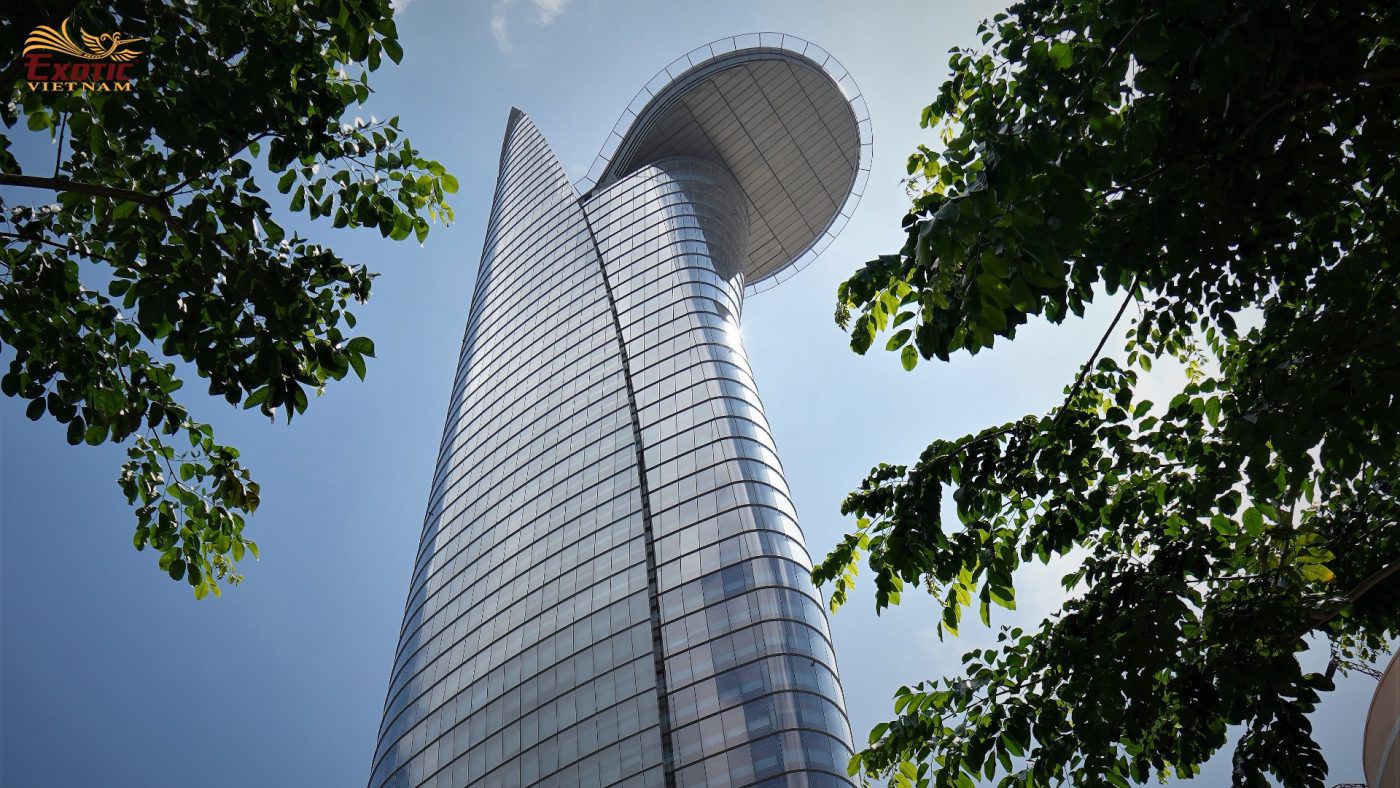
Skydeck’s Bitexco Tower
Opened in 2010, Bitexco Tower boasts Viet Nam’s one of tallest towers at the height of 262m. This building can be seen from many places in the city and has become a new icon of dynamic Saigon. Ride one of the fast lift to Skydeck at the 49th floor where visitors can admire 360-degree view of Saigon. It’s amazing to get definitely superb views of both the urban and rural parts of Saigon, the French architecture against the old Vietnamese buildings, as well as major landmarks, such as Ben Thanh Market, Opera House, Notre Dame Cathedral, and the Independence Palace. The view is more marvelous at sunset with all lights shimmering.
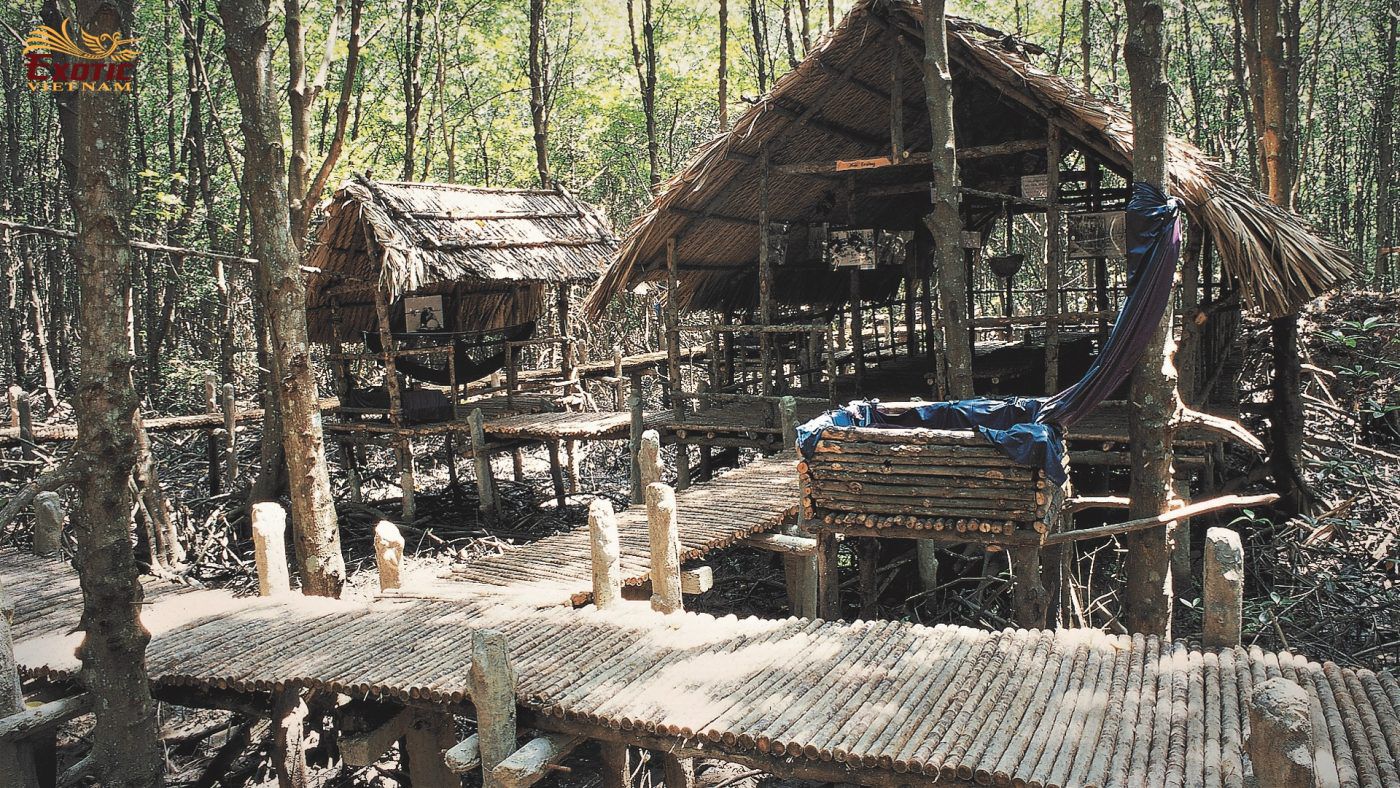
Can Gio Biosphere Reserve
Recognized by UNESCO in 2000, Can Gio Biosphere Reserve is located in the coastal district, 60km southeast of the centre of HCMC. Formed by alluvium from estuaries of Dong Nai River, this brackish low-lying land covers an area of 75,740 hectares including creeks, marshes and waters strongly influenced by semi-diurnal tides (2 main cycles per day).
Regarded as the city’s “green lung”, the mangrove forest in Can Gio is home to the highest diversity of mangrove species, invertebrates, fish and shellfish species. This sensitive ecosystem is easily damaged by any very small impact. In the heart of the forest, it is worth visiting a historic site that recreates the life of aqua commandos with plaster figures, wooden houses on stilts, diagrams of major battles,etc.
In 2021, Can Gio has been approved by the authorities to become an urban centre of entertainment, tourism and commerce featuring a 2,870-hectare sea reclamation project. Luxury villas, apartments, golf course, marinas, themed parks, etc will be sprouted. A big sea dike construction to separate Ganh Rai Bay from the sea has been mentioned nowadays. These matters will cause negative effects on the sustainability of the mangrove environment that needs to be conserved here.
